There are many sins that the medium of anime committed over the course of its lifespan, but today I’m going to talk about one that barely anyone seems to notice within the community and in the industry.
That is how 99% of anime utterly lacks what is known as Visual Story Telling.
What is Visual Story Telling? You might ask
Visual Story Telling is a method of story telling available to writers and creators that is used to tell a story with the usage of images, camera angles, colours, visual symbols and effects. Unlike the tool of narration, which tells the viewer the events and the story, visual storytelling shows the audience the story. This is an important point that I will return to multiple times in this article.
This is very relevant today because anime as a medium tells you everything, yet shows you nothing.
No matter what type of story, genre or demographic we are talking about, the primary method of telling a story to the viewer is done through directly feeding the information to him via the characters talking or having a narrator speak.
Just look at the simple matter of how modern anime tend to start themselves. If its a fantasy or scifi world then the audience is given a quick narrative summary of the world and introduce some of its basic mechanics and concepts. Just look at any of the Gundam series, they are usually 50 episodes long each, and for like 25 episodes they keep retelling the premise of the story at the start of every goddamn episode, as if the audience just suddenly forgot about it.
And if its not a fantasy or a scifi anime, then it will most likely start with the protagonist introducing himself within the first 5 minutes of the story as the average student, telling us his likes, hobbies and maybe a few notable elements of his life. Or he can be introduced in a darkened room where he immediately explains to us that he is some kind of NEET teenager who likes to play video games and watch anime and how he is generally an useless member of society.
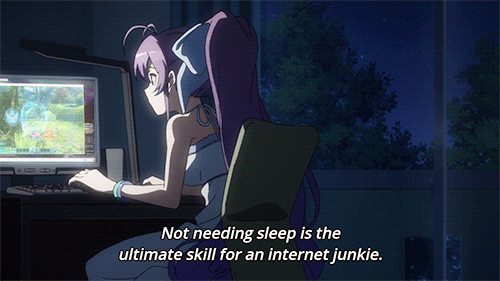
But from a writing standpoint there is absolutely no reason to do this, as it only serves to break the immersion and the pacing of the story. The starting monologue of the protagonists make little no sense as they have no reason to suddenly start speaking and recount their lives so far, it is obviously done for the sake of filling the audience in, but the protagonist is obviously not aware of the audience, so he has no reason to tell us his life story.
Likewise it is highly annoying in series like Gundam how I have to skip the 5 minute long exposition and episodely recap each time I start watching a new episode, I can’t even imagine how annoying it would have been to watch that anime on Live Television.
All of these problems could easily be avoided if anime used visual storytelling rather than narrating and explaining everything.

In the live action movie ‘They Live‘ by John Carpenter the protagonist does not need to make a self introduction. For the first 5 or so minutes of the film we are just shown him silently walking the road, carrying a large bag on his back, looking for a job. No words need to be spoken, to tell the obvious that this man is a drifter, someone without a place. The audience can deduce his initial characters just from looking at him and from what he is doing on the screen. This is a much better method of introducing a character as it also makes the audience think about them rather than being told everything in the form of narration, which leaves no room for interpretations.
Likewise it would be much more sophisticated and also better if anime didn’t use any words for its introduction sequences when it is highly evident as to what the characters are just from their appearance and context within the show. Like it is obvious when a character is a highschooler from their school uniform and age, and it is also equally obvious when someone is a NEET from their behavior and lifestyle, they are things that can be easily told via visual clues alone, so no need to involve words.
In Scifi and Fantasy anime, pretty much all the mystery, suspense, intrigue and the joy of discovery are lost if everything is just told to the audience, because it will end up feeling like a documentary rather than a form of entertainment, especially if the anime is infodump heavy. (And don’t be mistaken, I’m not saying that world building is bad here. In fact I love world building. All I’m saying is that there are right and sophisticated ways to do world building, and then there are bad and lazy ways of doing world building.)
Speaking of infodumping, anime generally makes use of it in a really retarded fashion. Like explaining what was already shown to the audience and was obvious even before the infodumping. Or when they have a character explain everything about their world to another character living in the same world as if it wasn’t common knowledge to them. Why the hell do you need to explain science and technology to someone living in a world of science and technology? Why the hell do you need to explain fantasy and mystery to someone who is living in a world of fantasy and mystery?
It is really apparent and blatant when infodumping is done for the sake of the audience as it completely breaks the immersion as well as the pacing. Infodumps that start with words like “As you already know……” are a sign of bad writing.
Or lets just look at how almost every anime character in action shows either outright tells us what their attacks and techniques do while performing the said attack, or directly explain to their opponent right after finishing it. I’m sure everyone is already aware of this as its something that easily reached the levels of a cliché by now. Anime characters talk far too much during fights when they absolutely have no reason to.
Just think about how the entire combat slows down just so that a character can explain the method or logic behind their attack/power/technique etc. It breaks the pacing and adds absolutely nothing in return.They should just show the combat without any interruption, because what is simple can easily be understood with the viewer’s eye, and what is complicated and impossible does not need any explanation as it probably borders on the level of magic anyway. And there is no reason for magic to be explained, because no matter how much detail you put into it, it will always remain just that, magic.
Or lets just talk about how facial expressions and gestures in anime are either nonexistent or overly exaggerated. Facial expressions, body positioning and gestures are a very good way of showing us a characters current emotion, agendas, relationship to another character and what they are thinking about. Yet anime once more makes no use of any of this, everything is simply told to us. In anime we know that a character is angry not from the visuals but primarily from their change in the tone of their voice and the manner which they address the other character.

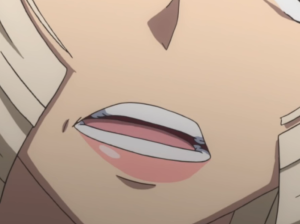

Far too many modern anime use basically two frames in order to animate characters talking, one frame of the mouth open, one frame of the mouth closed. They repeat using these two frames until the character finishes talking. This was originally intended as a method of saving budget, since they can keep reusing those two frames for however long they want and they don’t need to bother animating complex facial expressions. But nowadays even high budget anime refuse to animated facial expressions and stick to the 2 frame method.
And when they actually do make use of facial expressions, they heavily exaggerate it to the point where it becomes over the top, obvious and because of that also blatantly bad.

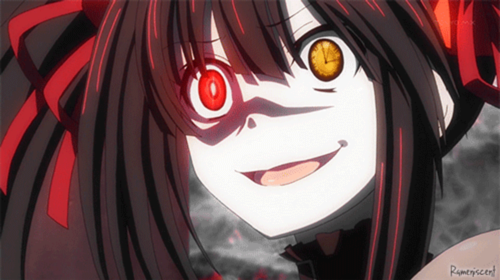
Movies do it objectively much better, due to the fact that the facial expressions are there, but the emotions and thoughts that they show are not always completely obvious and thus the reader can actually start thinking about what the character could be thinking about. While in anime there is obviously no need to do that due to the exaggerated facial expressions, which will always tell you exactly how a character feels or what she is thinking about. There is unfortunately no elegance in the storytelling of anime.
Let me show you an example of how facial expressions and gestures can also be used to tell a story. For this example I have chosen the De Niro movie known as Taxi Driver.
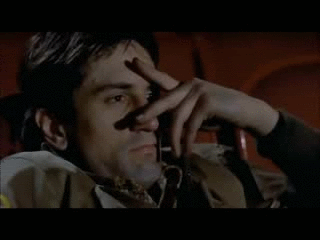
There is this scene in the movie where De Niro’s character known as Travis goes to the adult movie theater to watch a pornographic movie and while watching it, the movie shows us how Travis constantly raises and lowers his finger before his eyes during this scene. He acts as if he doesn’t want to see the dirtiness of the movie, yet forces himself to watch anyway. This is a seemingly insignificant detail, while in reality it is highly symbolic to what Travis was doing throughout the entire course of the movie.
And the thing that he was doing, was forcing himself to look at the ugliness and the filth of the world everyday, which is exactly why he choose the job of a late night taxi driver, just so he can watch the scum of the world from an even better position. He hated this side of the world and the people that inhabited it. So naturally the viewer would come to question as to why he was doing it in the first place if he hated it so much. But that isn’t something directly told in the movie, instead it was shown via this subtle and short moment during the porno theater scene, using nothing but the tools of the visual storytelling.

Another usage of Visual Storytelling from the same movie occurs at the ending of Taxi Driver. It is when Travis looks into the mirror and sees his own eyes, only for him to turn the mirror away a second later and continue driving.
The character spent much of the movie in his cab, watching his dirty passengers from the mirror as if he was a 3rd party observer and he judged them as he did so. And so when in the ending he finally gazes upon himself through the mirror, he pushes it away because he does not like what he sees. He realized in a glimpse just how he was exactly the same as the scum that he hated. It is really subtle to the point you might not even notice while watching the movie. Anime in comparison never use subtlety in their storytelling, everything is exaggerated and openly told to the viewer.
(Which is why I find it hilarious that so many people still manage to get lost or confused when watching them.)
I will give a third example from another movie called Schindler’s List, which is a famous holocaust story. Schindler’s List was made in 1993, but despite being made in such a modern age, it was shot in almost entirely black and white. It was purposely made that way because it makes the few instances when colour appears on the screen all the more noticeable, striking and significant. One of the times when we see some actual colour in the movie is when the National Socialists are herding the Jews, a child in red coat being escorted along with them.

This same red coat in a world of black and white reappears later in the film in such a manner as it is depicted below.

No words need to be spoken, it is obvious what happened.
I highly dislike the movie itself, but even I have to admit that the usage of the few instances of colour and the general lack of colour was clever. In Live Action movies colour is a frequently used tool and device that is used to draw the viewer’s attention to a particular object/person or to evoke a certain emotions/feelings in them. Blue usually calms the viewer but it can also be a symbol of cold, red can be the colour of anger, passion and love etc. You might have already heard about this, so I’m not going to needlessly list everything. The point that I want to make is that anime, despite having far more liberty and freedom than live action shows, refuses to use them. Like out of the several hundred anime that I have watched, I can only think 1 or 2 shows that actually used colour in some way or another.
In the anime community there are a number of anime that are acknowledged to be visually “superior” or even the best amongst anime. These anime include Kotonoha no Niwa, 5cm per second and Fate/Stay Night Unlimited Blade Works, just to name a few. They are widely regarded by the average anime to be the best that anime has to offer in the visual department. I can only disagree with them unfortunately, for a variety of reasons.

I’m not going to deny that they look good, indeed they look far better than the average anime, I will give credits where it is due. But looking good is all that they are good for, even in these aesthetically beautiful anime, there is zero artistic talent and zero visual storytelling, they don’t use any of that stuff. The reason for that? They don’t want to use them nor do they need to make use of them.
Anime studios always think in terms of profit, mostly the matter of how to get the most possible amount of profit with the least possible amount of money and effort spent. They are about business first and foremost, their objective is to sell, not to make good anime. And unfortunately the two cannot be combined for good anime tend to sell very badly according to statistics.
Studios have found out quite early on that one of the easiest method to gain and keep viewers around is to have above average animation and art style. The logic behind this process is very simple, if a viewer finds something to be visually appealing or entertaining he is far less likely to stop watching as he is constantly entertained by all the pretty colours and effects. Similar to how in Hollywood blockbusters like Avatar and Transformer all the explosions and spectacular effects only exist to keep the audience glued to the screen and perpetually excited.
Art and animation in such works don’t actually exist to make the work better, it exists for the sake of reaping a profit. It isn’t connected to the work as a whole and does nothing to benefit it aside from wrapping it up like a nice present box. The difference is made all the more obvious when one watches a show that actually makes use of the full potential of visual storytelling and art direction.
Earlier I said that 99% of anime do not use visual storytelling in any form or manner. Well now it is finally time to take a look at the 1% that do make us of it.
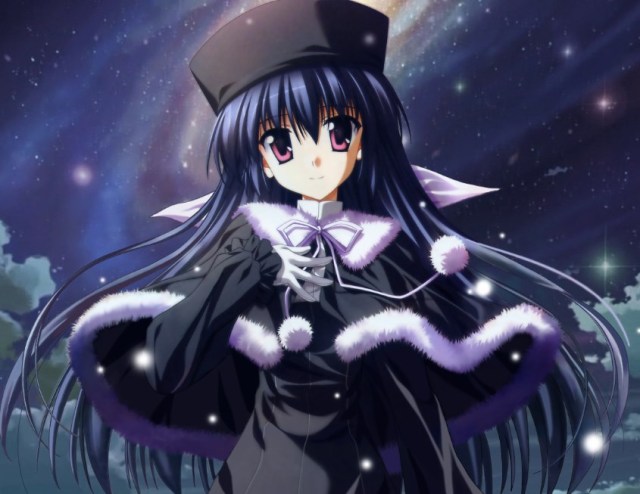
The first anime that I’m going to mention that makes use of Visual Storytelling is none other than Ef Tale of Melodies, second installment in the Ef series. Ef is an interesting series for a number of reasons like the fact that it tells 2 stories at once that are loosely connected in an achronological manner, but that isn’t what I want to talk about now. Instead I would like to focus on the Art and more importantly, the usage of Art in Ef.
The art by itself during the usual scenes is nothing special for its time, it may be a bit above average in visuals, but the real change comes when the characters start their dialogues and monologues, which are objectively the best parts of Ef. I’m not exaggerating when I say that Ef Tale of Melodies has some of the best monologues in the entire anime industry. Like very few come even close to it, and this is purely because of the usage of visual storytelling.
In this show when a character starts talking, it is not unusual for quick images to flash by that you might even notice if you aren’t paying attention, these can range from just showing a character’s eyes and nothing more, or showing batches of text and words. Things become surreal in the background and the visual distort as the characters keep talking in the dramatic moments of the show.
Their emotions, feelings, sanity and state of mind is reflected back to us from the change in their surroundings and from the usage of various visual effects. These look especially good and distinct in comparison to the usual art style that Ef has in its non dramatic, peaceful moments. It is really nice to see the art being used to its fullest potential in order to serve the anime as a whole.
Any words I would say on this matter would not do it real justice, so I would prefer if you could just watch them for yourself. I’ll provide a few links below, please check them out.
Ef Monologue 1: https://www.youtube.com/watch?v=MwqHbasN3oM
Ef 2: https://www.youtube.com/watch?v=9m_OJPdS8_U
Ef 3: https://www.youtube.com/watch?v=yoLOXOkSqyk&nohtml5
I honestly think that these scenes speak for themselves. The Ef series didn’t have an extraordinary budget by any means. Imagine if these same scenes were done with the budget that was wasted on Unlimited Blade Works and similar anime, it could produce a spectacular artistic result.
There is another anime called Sayonara Zetsubou Sensei that uses the same techniques as effects that are found within Ef, which is hardly surprising considering they are both made by Studio Shaft. Zetsubou Sensei is a comedy while Ef is a romance-drama series, so the same techniques are used for vastly different purposes in these two works. In Zetsubou Sensei various texts would often flash quickly or be written onto the background (usually on the chalkboard) that frequently make sarcastic remarks regarding the anime industry, Japanese society or what is going on within the show itself.
Sayonara Zetsubo Sensei was made in 2007, while Ef Tale of Melodies was made in 2008. Now what has Studio Shaft done after these two works? Pretty much nothing of value. In 2009 Shaft released Bakemonogatari, which is a harem/fanservice show with supernatural elements. In Bakemonogatari they used the same effects and techniques that they used in Ef and Zetsubou Sensei….for fanservice. Talk about degradation.

Bakemonogatari brought success to Shaft and made them famous, which is why they are still milking this fame while it lasts by pumping out more and more monogatari shows every year or so. Zetsubou and the Ef series never sold much on the other hand and as of 2016, pretty much no one talks about them. Remember earlier in the article when I said good anime don’t sell? Then consider it repeated just now.
Imagine if either Zetsubou or Ef were successful instead of Bakemonogatari. We would have more shows like them made by Shaft instead of cheap, pretentious harems that pander to the otaku audience.
The most hilarious thing about Bakemonogatari though, is how it managed to convince hundred-thousands of people that it is something more than a mere harem. Anyone who has ever interacted with the rabid fanbase of the Monogatari series knows what I’m talking about. They will go to extreme lengths just to argue that their favourite harem/fanservice is actually some deep and mature show that you just don’t get. No it isn’t, it is generic harem and everyone was deceived into thinking it is something more due to the usage of visual effects and techniques that are almost never used in anime. Like really, other than Shaft no one really seems to use it, thus they don’t have much in terms of competition. Still the current state of the Monogatari fanbase is only more evidence to the effectiveness of visual storytelling.
Ahem. Before this becomes a Shaft and Monogatari fanbase rant, allow me to re-divert myself back to the original topic. One more anime that I would like to talk about is Texhnolyze. (Mostly just so I can name a non Shaft example of visual storytelling being used in anime.) And no, I won’t be repeating myself, because Texhnolyze uses completely different visual storytelling methods compared to the anime made by Shaft.
If your usual anime fan goes to watch Texhnolyze, then he will most likely feel bored out of his mind, eventually lose track of things, which will most likely result in him dropping the show. I’m not kidding, Texhnolyze is widely regarded as a sleep-fest by many who have attempted completing it.
This however is not because of Texhnolyze being bad or boring. It is because this show is vastly different from your average anime, which can cause some discomfort to the average anime fans who attempts to bite this piece. I would say that it is actually more similar to western movies like Taxi Driver.
The difference is that Texhnolyze does not care about entertaining its viewers, nor does it care about keeping the viewers attention, it is work that obviously exists for its own sake. Texhnolyze doesn’t hold your hand like most anime do, there is zero narration and even dialogues are rare. Indeed, if one watches the first episode of this anime, he will immediately notice a strange thing, that no words were uttered until the very end of the episode.
In your average anime, I would say that more than half of the words that are said only exists for the sake of the viewer, words for introducing the world to the viewer, words to introduce the characters, words to tell the plot, words to make sure the viewer does not get confused etc. Texhnolyze is what you get when you remove all those useless words.
This anime does not tell us about its world or characters, it simply shows us instead.
In the first few minutes we are shown our silent main character, Ichise as he is taking a shower with his bloodied fists, we see him fighting another man in a tournament in the form of a flashback, he has a sadistic smile on his face as he draws blood from his opponent. A bit later a woman enters the shower and tries to exploit Ichise, she takes him to bed and Ichise is unresponsive until the woman tries to pluck out his eye. Ichise beats the woman up, unknowingly starting a sequence of events with this.
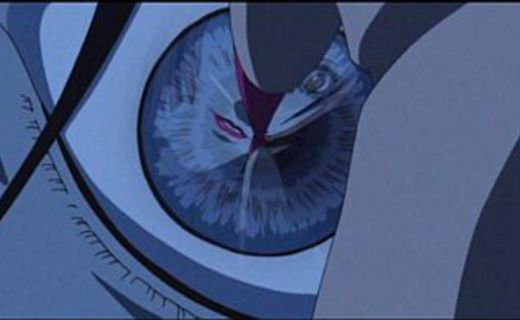
In these few minutes we get a glimpse into Ichise’s personality and we learn his characteristics without any words being uttered. Those characteristics being his fighting spirit, his will to life, blood lust, his inability to hold back, the fact that he flows with the events of the story (like how he let the woman to take advantage of him), but he does not like it when the events fuck with him (how the woman tried to pluck out his eye), Ichise generally beats everyone who fucks with him. These characteristics remain consistent for the rest of the anime.
Simultaneously we are shown another character called Yoshi, who is descending down on an incredibly lengthy set of stairs, wearing a gas mask and carrying a backpack on his shoulders. Through this, it becomes obvious that wherever this place called Lux is, it is deep below underground and it also established Yoshi’s character as the newcomer to Lux who will disturb the order of this place. It is also because of the fact of him being a newcomer and his curious nature that he is one of the most talkative characters in the first half of the anime, which is in stark contrast with the silent nature of our protagonist, Ichise.
And since the story mostly follows the character of Ichise, this anime isn’t really dialogue heavy, even when other characters are talking to him, Ichise rarely responds. He is a quite basic and simple character that some of the more intelligent people in the anime rightfully called a beast. It is always apparent what Ichise thinks and feels not based on what he says, but based on what he does. You will always know when Ichise does not like something or someone, since as I said, he isn’t the type to restrain himself.
Ichise’s behavior is in contrast with everyone else in the show, as they are habitual liars, schemers and manipulators. There are several conspiracy and scheme subplots going on in this anime, with characters constantly trying to backstab and screw each other, Ichise is one of the few, if not the only honest character in this anime, a beast does not need to lie after all. The liars are also great because the anime frequently makes use of facial expressions and gestures. A character might be saying one thing, but his emotions and body language might be saying something completely different. This is something rarely used in anime.
The anime does “ease up” on the silence and adds more dialogue starting the second half, but the show overall still maintains the “showing” over “telling” approach. The saying that goes “a single picture tells more than a hundred words” is completely applicable here.
One of the most frequent complaints regarding Texhnolyze is that the story is too “deep” or too “complicated”. While in reality Texhnolyze is actually really simple, it just seems complicated because the show does not explain itself to the viewer at all, it only shows things. There is no narrator to help you out here like most anime. You simply get what you are shown.
To understand the story of Texhnolyze the viewer must simply realize 2 facts regarding the show. The first thing to realize is that Texhnolyze is thematically about humanity’s end, a time and place where scientific, technological, cultural and evolutionary progress have come to a halt. The second thing is that each major character represents a particular concept or idea, that is bigger than themselves. And whenever these characters are killed or die, it is not only they themselves that perish as a person, but also the ideas and concepts that they represented.
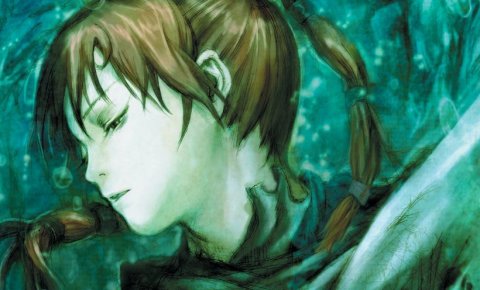
The concept behind each character is conveyed through their actions, through visual storytelling once more, no narrator comes along to tell you that X character represents Y.
For example Onishi who constantly tries to keep things under control, guess what, represents order. When he dies so does order cease to exist.
Ran who can see the future and hides her emotions behind a mask, represents humanity’s future. When she dies so does the future of humanity.
Ichise our protagonist represents humanity’s most basic and primal emotion, the will to live, which is exemplified by pretty much all of his actions and him surviving many fatal situations thanks to his willpower alone.
It’s all really simple.
Alright, I could write more and list even more examples, but I think you get my point by now, and if you still don’t, then no amount of examples would convince you otherwise, so its pointless to drag this on as I’m already at 4k words. Time to wrap this up.
Conclusion:
Anime as a whole fails to use one of the most basic and useful tools at its disposal. Anime is a visual medium, far more than live action movies are. Yet it completely fails in utilizing the tools of visual storytelling. There is no usage of symbolism, colour, proper facial expressions, body language etc. in your average anime. It relies too heavily on talking, whether in the form of the characters or the form of a narrator, there is always someone in anime who is just there to explain stuff to you.
Not only does this mean that anime treats its audience as if they were idiot who need to be spoonfed every minute, but it also makes it as bad as someone explaining their own joke. Anime don’t need to explain themselves, they shouldn’t do it, all they would need to do is to present themselves via showing things and let the viewer think and have his interpretations instead of forcing the information down his throat.
I’m not saying here that anime should be a medium where no one talks. Nor am I saying that every anime should be a symbolic and artistic masterpiece, all I’m saying is that anime directors should really just fucking learn to use the tools that are available on them and stop solely relying on narration and dialogues to tell a goddamn story.
But of course none of that will ever happen as long as anime remains a profiting industry in its current format. As long as it keeps making money, there is no need for creators to be innovative and experimental and anime fans most certainly do not care about them not utilizing these tools. Unless the industry collapses, anime will remain a medium where visual storytelling remains unused.
I think part of the issue is that anime is really, at the end of the day, a cartoon animation. Live TV shows or films can show you so much more because human facial expressions tell us so much in our every lives whereas anime is just a 2-D animation. I agree though, retelling stories can be completely obnoxious when you’re just trying to get on with it (especially intros or fight scenes, as you pointed out).
LikeLiked by 2 people
You are right that medium of anime is more limited in terms of facial expressions than a live action movie, which has actual real people at its disposal. It would take considerable effort and money for an anime to have the same facial complexity as live action movies.
But then again, the average modern anime don’t even TRY to make use of normal (non exaggerated) facial expressions, instead they use easy cop-out methods like the 2 frame animation technique that I mentioned. So the problem isn’t really with the medium itself, but with the laziness and cheapness of the creators.
This laziness becomes all the more obvious when one looks at older anime, just take a glance at the period of 1995-2000 for example. Facial expressions and gestures have been much more prevalent in that era, yet it was Lost as we progressed into the modern era because in the end not using facial expressions saves budget.
Creating facial expressions in older anime took effort, money and time, but studios STILL made use of them. The reason being? 1995-2000 was the Era of “Experimentation”, a time period where anime studios did not mind taking risks in order to try out new things that haven’t been tried out before. This era created some of the most unusual and unique anime out there due to these various attempts at experimenting with something new.
In comparison our modern era (2008 and onwards) is the complete opposite. All the studios have settled into a routine, a methodology that they won’t stray away from as long as it keeps making them money. No one takes risks anymore, everyone prefers to play safe instead. Almost every product is made with the intent of creating the most possible amount of revenue, while costing the least possible amount of investment and money on the studio’s part.
In reality creating facial expressions would be much easier today with newer technologies like motion capture and 3d models than it was in the period of 1995-2000, yet no one will take advantage of this fact because of the potential risks.
LikeLiked by 4 people
Basically you criticize Anime for reasons i love Anime…
Well, not all anime.
But exagerrations is one of things i love Anime for.
When i were a kid i grew up on cartoons like Ren and Stimpy. I LOVE exagerrations. And then i saw exagerrations in Anime, and i fell in love with them.
Characters narrating what we already see is another thing i love Anime. It creates a certain flair, like watching a soccer match with commentators.
And my favorite story format is Monster of the Week. It’s the perfect story format for me. 90’s Sailor Moon is one of the my most favorite types of animation. I love how it can shift between serious and non serious, i love the facial exagerrations.
The comedy is one of the most important thing… no, Comedy IS the most important thing, and the more humours anime, the better. And if Anime can also make a great story while not being ashamed of looking too humorous, then it’s even greater.
Look at Gurren Lagann. It’s main focus is Exagerration. This is what i love Anime for.
LikeLike
Speaking of which, how many 90’s or 80’s Anime have you watched?
I mean, when we speak of Masterpieces, Legend of the Galactic Heroes is the BEST Anime i have watched in terms of mature story. And i love the way it presents it’s story.
Let’s just say… that i just dislike the Hollywood style of direction in movies.
I say: Visual Storytelling is good. BUT IT’S NOT NECESSARY.
Do you realize that there are people who prefer VOCAL NARRATION over Visual narration?
Do you realize that there are people who prefer ANIME MOUTH FLAPS over fluid mouth?
All those flaws of anime is what i LOVE about Anime. It stands out compared to academical standarts!
Modern “High Quality” stuff just doesn’t do it for me. It looks bland, boring, the same. But old Anime… it’s just fantastic. It’s crazy, wacky, zany, that’s what i love about Anime!
LikeLike